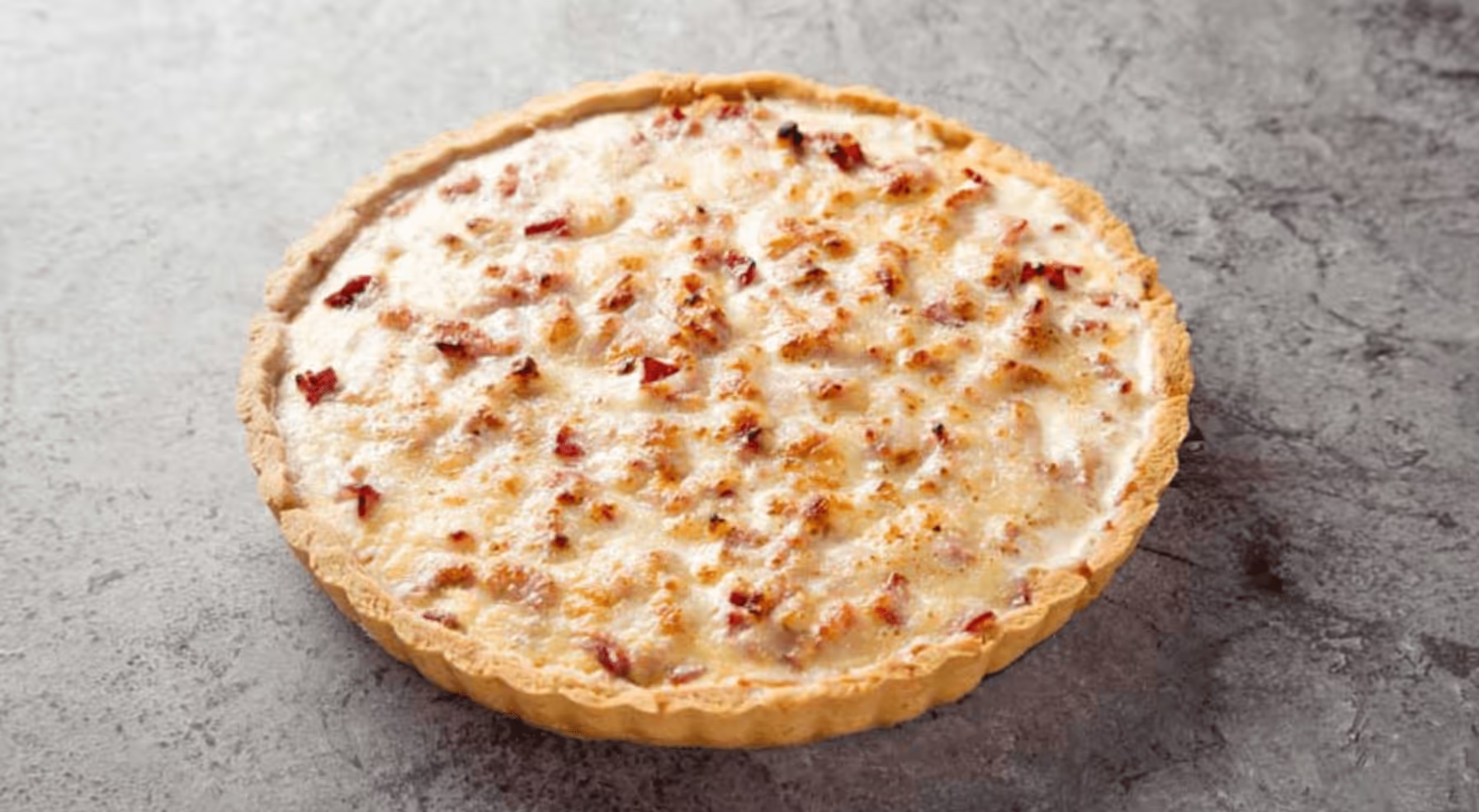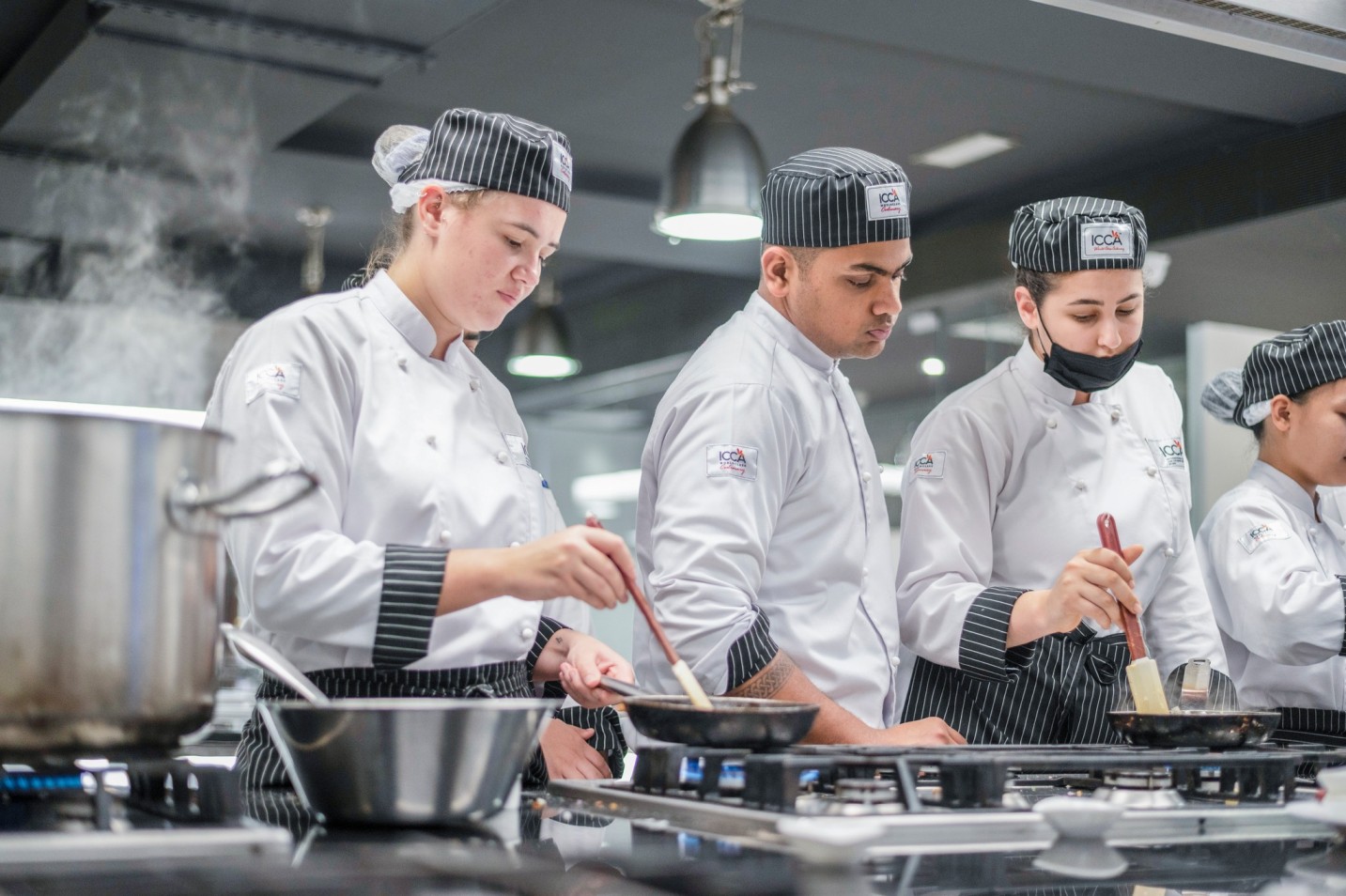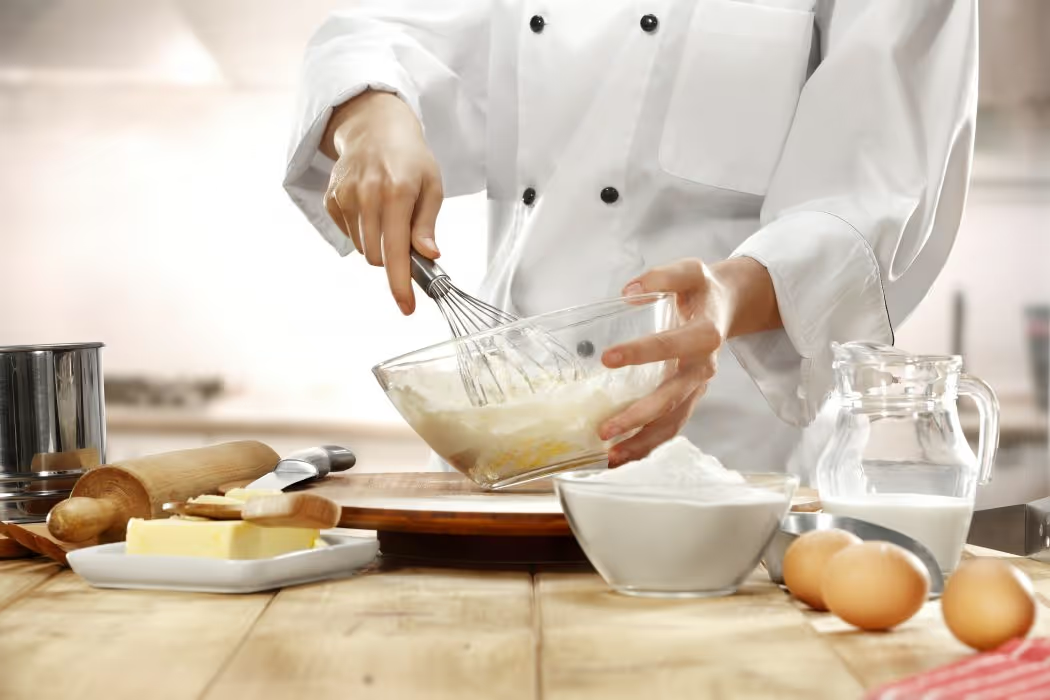The Quiche is a well known French classical dish that actually originated in Germany and was first called “Kuchen”, meaning cake.
Tarts and Pies are generally made of a pastry crust base, with fillings that are either sweet or savory. They are both quite similar in structure. In fact the French word “tarte” also means Pie. A pie is usually covered, with a filling on the inside, whilst tarts have a filling over the pastry base and are generally left uncovered.
The history of tarts and pies dates back as far as the early origin of flour dough and the invention of the oven. The earliest ovens were simply clay pots heated by placing a fire on the inside; to help keep the juices of the filling from escaping and getting burnt, the meat fillings were wrapped in a cover made of dough before being placed in the ovens to bake, thus resulting in the coming to be of the very first Pie.
To learn more about the different types of Tarts & Pies, you can go through the introductory lesson - Creative Baking… Tarts & Pies!
Tarts & Pies Recipe of the Day - The Quiche Lorraine

About Quiche Lorraine
The Quiche is a well known French classical dish that actually originated in Germany and was first called “Kuchen”, meaning cake.
Traditionally, the Quiche Lorraine was made from bread dough, filled with bacon, eggs, and cream custard. Today, this Quiche consists of a shortcrust pastry case with a variety of savory fillings such as mushrooms, asparagus, cheddar cheese, cream, eggs, bacon & roast chicken.
Quiches are predominantly made in a large shell pan, however, could also be made in mini tart sizes and served as an appetizer.
This Dish
The flaky shortcrust pastry balances and goes well with the rich savory egg custard that is highlighted by the salty bacon, baked in the oven, and served cold. It has eggs, milk, cream, cheese, and bacon filling that act as a custard, resulting in a very light dish that could also be enjoyed as a snack.
Recipe Card (to serve 4 pax)
Method of Preparation
1. To make the pastry, you can make the dough by rubbing the butter into the flour and salt with your fingers until crumbly, then add the egg until well combined. Alternatively, place the flour and butter in a food processor and blend until the mixture resembles fine bread crumbs. Add the egg to make a smooth and soft dough. Do not knead, as the pastry will become tough.
2. Cover the dough in cling film and chill for at least 30 minutes. Preheat the oven to 180˚C.
3. On a lightly floured surface, roll out the pastry dough until even in depth (1/2 centimeter) and line a deep flan tin by pressing the dough into the sides.
4. Prick the base of the pastry with a fork (docking), line with baking paper and fill with baked beans or any dried pulses or grains. Bake blind for 20 minutes; remove the paper and beans. Once baked set aside. Docking and blind baking with the weight prevents the pastry from puffing.
5. Meanwhile, heat a large sauté pan, add butter and fry the beef bacon for 1 to 2 minutes. Add the onion, sauté for a further 2 to 3 minutes. Then spread the onions and bacon over the pastry case and add the cheese and black pepper.
6. Whisk together the eggs, cream, milk, and salt, and pour into the pastry case.
7. Place the tin on a baking tray and bake at 140˚C for 25 to 30 minutes, or until golden in color and just set. Allow it to cool a little, then slice and serve while still warm.
8. Do not brown the custard in the oven.








